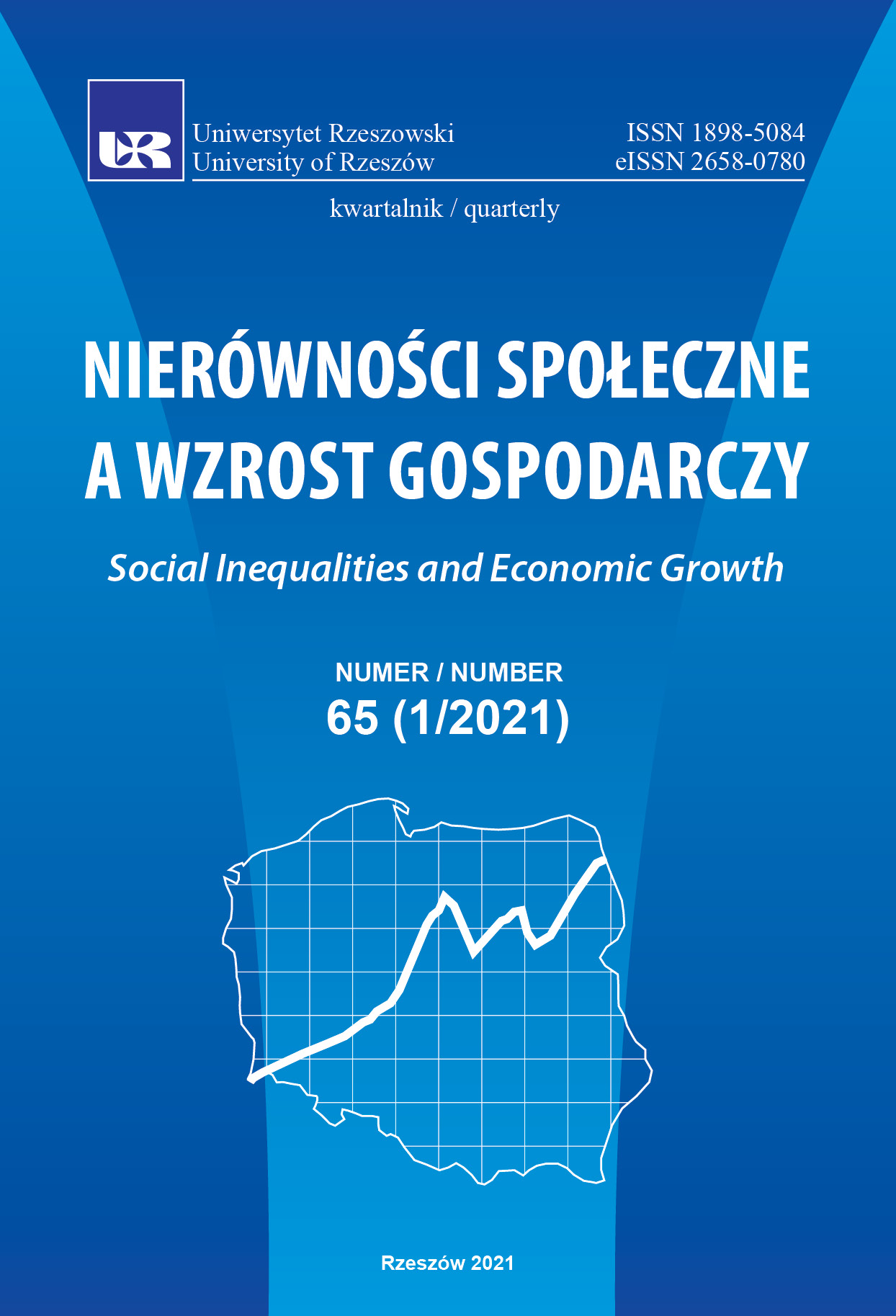Communication between physician and patient in cancer patients
DOI:
https://doi.org/10.15584/nsawg.2021.1.9Keywords:
communication, physician, patient, neoplasm diseaseAbstract
The main goal of the study was to assess the doctor’s communication with the patient. The detailed goals concerned the assessment of satisfaction with the way the physician communicates with the patient, the assessment of the communication methods used, the duration of the visit to a physician’s office, understanding of the information provided to patients, the physician’s personal culture, and the subjectivity of the patient. A questionnaire developed specifically for the study objectives was used. The analysis used data from 238 questionnaires completed correctly by cancer patients treated in a specialist hospital. The database was created in Excel and the analysis was performed using Statistica software.
The analysis of the data shows that the physician’s communication with the patient is a very important aspect in the treatment process. Not all respondents were satisfied with the way the physician communicated information about the further treatment process, which increased the sense of security loss and undermined confidence in the physician’s decisions. Most patients understood the recommendations and advice provided by the physician, but there was a group of respondents who did not understand all the words used by the physician, which may lead to the non-compliance of the patient to the treatment recommendations. Patients highly appreciated the personal culture of physicians but they expected greater subjectivity in their treatment. The analysis of statements indicated that the patients’ expectations in the area of physician – patient communication are growing, which obliges physicians to broaden their knowledge in communication techniques.
Downloads
References
Baker, R. B. (2002). Bioethics and history. Journal of Medicine and Philosophy, 27(4), 447–474. DOI: 10.1076/jmep.27.4.447.8606.
Czerska, I. (2016). Relacje lekarz – pacjent a wybrane teoretyczne modele relacji w kontekście dehumanizacji medycyny. Handel Wewnętrzny, 5, 37–45.
Emanuel, E. J., Emanuel, L. L. (1992). Four models of physician – patient relationship. Journal American Association, 267(16), 2221–2226. DOI: 10.1001/jama.267.16.2221.
Feinberg, J. (1971). Legal paternalism. Candian Journal of Philosophy, 1(1), 105– 124. DOI: 10.1080/00455091.1971.10716012.
Fryc, A., Krassowska, M., Szymik, D., Hamoud, M., Patela, K. (2018). Rola internetu w relacji lekarz – pacjent zbadana w wybranych grupach wiekowych. Pielęgniarstwo i Zdrowie Publiczne, 8(4), 285–296. DOI: 10.17219/pzp/86410.
Gałuszka, M. (2012). Nowe zjawiska w relacji lekarz – pacjent w kontekście rozwoju internet. Przegląd Socjologiczny, 61(2), 118–150.
Giubilini, A., Milnes, S., Savulescu, J. (2016). The Medical Ethics Curriculum in Medical Schools: Present and Future. Journal of Clinical Ethics, 27(2), 129–145.
Griffin, E. (2003). Podstawy komunikacji społecznej. Gdańsk: Gdańskie Wydawnictwo Psychologiczne.
Jarosz, M. J., Kawczyńska-Butrym, Z., Włoszczak-Szubzda, A. (2012). Modele komunikacyjne relacji lekarz – pacjent – rodzina. Medycyna Ogólna i Nauki o Zdrowiu, 3(18), 212–218.
Kęsy, M. (2012). Relacje i komunikacja w świecie medycznym. Kraków: Uniwersytet Jagielloński.
Kiełkiewicz-Janowiak, A., Zabielska, M. (2017). Lekarz i pacjent na emigracji: odmienne kultury komunikacji w ochronie zdrowia w Polsce i w Wielkiej Brytanii. Sztuka Leczenia, 1, 33–41.
Kowalczyk, J. R., Samardakiewicz, M. (1998). Dziecko z chorobą nowotworową. Warszawa: Wydawnictwo Lekarskie PZWL.
Kuczyńska, A. (2001). Modele kontaktu lekarza z pacjentem. W: G. Dolińska-Zygmunt (red.), Elementy psychologii zdrowia (s. 201–212). Wrocław: Uniwersytet Wrocławski.
Kuty-Pachecka, M., Stefańska, K. (2014). Zaburzenia psychiczne u dzieci z rozpoznaną chorobą nowotworową. Psychiatria i Psychologia Kliniczna, 14(2), 156–163. DOI: 10.15557/PiPk.2014.0024.
Laskowski, W. (2010). O komunikacji twarzą w twarz w perspektywie somatycznej. Investigationes Linguisticae, XXII, 42–78. DOI: 10.14746/il.2010.22.3.
Migge, B., Gilmartin, M. (2011). Migrants and healthcare: Investigating patient mobility among migrants in Ireland. Health & Place, 17, 1144–1149. DOI: 10.1016/j.healthplace.2011.05.002.
Nęcki, Z. (2000). Komunikacja międzyludzka. Kraków: Oficyna Wydawnicza ANTYKWA.
Nowina-Konopka, M., (2016). Komunikacja lekarz – pacjent. Teoria i praktyka. Kraków: Uniwersytet Jagielloński.
Widera, A. (2007). Psychologiczne aspekty pacjenta z chorobą nowotworową. W: B. Bętkowska-Korpala, J. Gierowski (red.), Psychologia lekarska w leczeniu chorych somatycznie (s. 67–82). Kraków: Wydawnictwo Uniwersytetu Jagiellońskiego.
Williams, S., Calnan, M. (1991). Key determinants of consumer satisfaction with general practice. Fam Pract, 8(3), 237–244. DOI: 10.1093/fampra/8.3.237.
Williams, S., Weinmen, J., Dale, J. (1998). Doctor Patient Communication and Patient Satisfaction. Family Practice, 15(5), 480–492. DOI: 10.1093/fampra/15.5.480.
Wojtyniak, B., Goryński, P., Moskalewicz, B. (2013). Sytuacja zdrowotna ludności Polski i jej uwarunkowania. Nowotwory. Journal of Oncology, 63(3), 1–269. DOI: 10.5603/ NJO.2013.0010.
Wróbel, M. (2005). Uwaga, zaraźliwy nastrój. Charaktery, 8, 21–22.
Stewart, J. (2014). Mosty zamiast murów. Warszawa: PWN.
Szasz, T. S., Marc, M. D., Hollender, H. (1956). A Contribution to the Philosophy of medicine The Basic Models of the Doctor – Patient Relationship. A.M.A. Archives of Internal Medicine, 97(5), 585–592. DOI: 10.1001/archinte.1956.00250230079008.
Szewczyk, K. (2009). O bezsensie i potrzebie konstruowania modeli relacji lekarz – pacjent. Krytyka Lekarska, 2–3, 17–38.
Stangierska, I., Horst-Sikorska, W. (2007). Ogólne zasady komunikacji między pacjentem a lekarzem. Forum Medycyny Rodzinnej, 1(1), 58–68.
Załazińska, A. (2006). Niewerbalna struktura dialogu. Kraków: Universitas.
Zembala, A. (2015). Modele komunikacyjne w relacjach lekarz – pacjent. Zeszyty Naukowe Towarzystwa Doktorantów UJ. Nauki Ścisłe, 11(2), 35–50.
Veatch, R. M. (1991). The Patient-Physician Relation: The Patient as Partner. Bloomington: Indiana University Press.
Veatch, R. M. (2006). How Philosophy of Medicine Has Changed Medical Ethics. Journal of Medicine and Philosophy, 31(6), 585–600. DOI: 10.1080/03605310601009315.
Downloads
Published
How to Cite
Issue
Section
License

This work is licensed under a Creative Commons Attribution-ShareAlike 4.0 International License.


